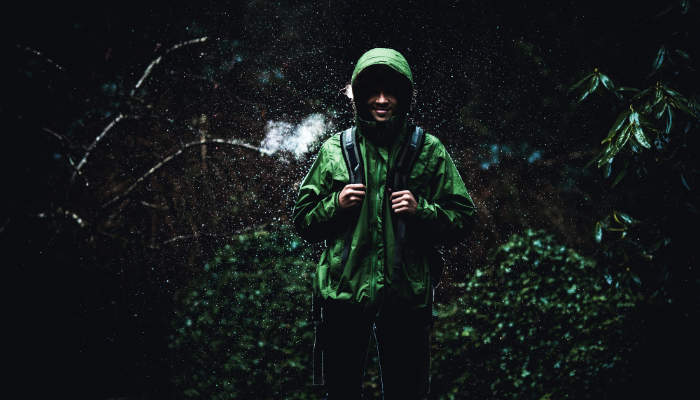Vacuum compression backpacks are a game-changer for frequent travelers and minimalists. They save space, keep items organized, and streamline packing. But there’s one major concern for outdoor adventurers and urban commuters alike: are vacuum compression backpacks waterproof?
In this guide, we’ll explore what waterproof means in this context, how different materials perform, and what mistakes to avoid. Let’s break it down.
Understanding “Waterproof” vs. “Water-Resistant”
It’s easy to confuse “waterproof” and “water-resistant,” but they’re not the same.
-
Waterproof means the backpack can block water entirely, even in heavy rain or full submersion.
-
Water-resistant means the backpack repels water to a certain degree but may still allow moisture in under prolonged exposure.
Many vacuum compression backpacks fall under the water-resistant category, which is typically sufficient for day-to-day travel, short hikes, or commuting. However, if you plan to use your backpack in wet environments or extreme weather, it’s crucial to understand the level of protection your bag provides.
Materials That Matter: What Your Backpack is Made Of
The waterproof capabilities of a vacuum compression backpack largely depend on its material. Common choices include:
1. Nylon with PU or TPU Coating
This is the most common combination. Lightweight, durable, and decently water-resistant.
-
Pros: Affordable, decent water resistance.
-
Cons: Not fully waterproof unless seams are sealed.
2. PVC or Tarpaulin Layers
Heavier-duty materials used in adventure or tactical backpacks.
-
Pros: High-level water protection, very durable.
-
Cons: Less flexible, heavier, less breathable.
3. Ripstop Polyester
Often used in lightweight backpacks with compression features.
-
Pros: Lightweight and affordable.
-
Cons: Not very waterproof without coating or liners.
Always check the product’s IP rating (Ingress Protection), if provided. This rating indicates how well the backpack resists water and dust.
The Role of Zippers and Seams in Waterproofing
Even if your backpack is made from waterproof material, it can still leak water through:
-
Zippers – Unless they are waterproof or have storm flaps, water can seep through.
-
Stitching and Seams – Poorly sealed seams compromise waterproofing.
To enhance water protection:
-
Look for welded seams instead of stitched seams.
-
Choose YKK Aquaguard zippers or similar waterproof options.
-
Use an external rain cover for added defense.
Is the Vacuum Compression Function Itself Waterproof?
This is a common misconception. The vacuum compression function is designed to compress air out of your clothes or gear, not to keep water out.
Many vacuum compression backpacks include a valve or pump system, which may not be waterproof. If water enters the valve opening, it can affect both compression and the contents inside.
Tip: Don’t assume the airtight valve equals waterproof protection.
Real-Life Scenarios: How Waterproof Do You Need It to Be?
Different situations require different levels of water protection:
| Scenario | Water Protection Needed |
|---|---|
| City commuting | Water-resistant is usually enough |
| Weekend hiking trips | Water-resistant with rain cover |
| Tropical or rainy destinations | Waterproof materials + sealed zippers |
| Water sports/boat trips | Fully waterproof dry bag or liner |
Use dry bags inside your backpack for sensitive electronics or clothing if you anticipate wet conditions.
Best Practices to Keep Your Backpack Dry
Even the best backpack needs a little help. Here are a few practical tips:
-
Always carry a rain cover. It’s lightweight and adds an extra layer.
-
Use internal dry bags or zip-lock pouches for valuables.
-
Keep electronics in top compartments, away from the bottom where water might pool.
-
Avoid placing your backpack directly on wet ground.
-
Dry the backpack thoroughly after exposure to moisture to prevent mildew and odor.
Common Mistakes to Avoid
To wrap up, let’s cover a few mistakes travelers often make when trusting the waterproofing of their vacuum compression backpack:
-
❌ Assuming waterproof = submersible. Most backpacks aren’t designed to go underwater.
-
❌ Forgetting about zippers and seams. These are the weakest points for leaks.
-
❌ Overstuffing the bag. This can stress seams and cause gaps.
-
❌ Not testing the backpack before a trip. Spray it at home and see how it performs.
Conclusion: So, Are Vacuum Compression Backpacks Waterproof?
The short answer: Some are water-resistant, few are fully waterproof.
When choosing a vacuum compression backpack, pay close attention to the material, construction, and intended usage. With the right precautions—like rain covers and inner dry bags—you can confidently protect your gear even in unpredictable conditions.
Before you buy, ask yourself:
“How wet will my adventures get?”
Let your answer guide your choice—and don’t forget, a little prep goes a long way when staying dry on the move.



